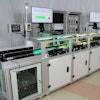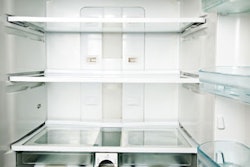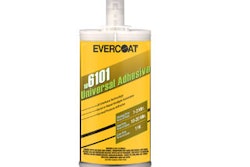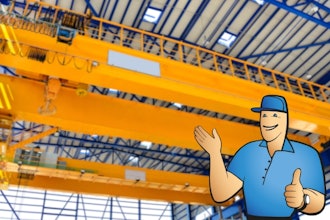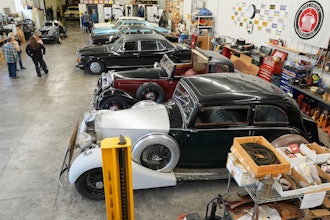This article first appeared in IMPO's September 2012 issue.
Whether it is being used for chemical processing equipment, heat exchangers, or in food and beverage processing, austenitic stainless steel (also called 300 series stainless steel) has become an increasingly common material across multiple industries. This is due, in part, to the material’s corrosion resistance and its relatively high tensile strength. It also possesses good ductility to withstand a range of service conditions and temperatures.
Still, austenitic stainless steel poses some distinct challenges during the welding process. For one, it is a poor conductor of heat and it is also prone to thermal expansion during the welding process, both factors that can lead to distortion and cracking. These factors also make GTAW welding the process of choice for welding austenitic stainless steel since it creates a reasonably narrow heat-affected zone. In addition, austenitic stainless steel is prone to carbide precipitation, a phenomenon that reduces the corrosion resistance of the austenitic stainless steel.
With such challenges inevitably come inquiries as to the best way to GTAW weld austenitic stainless steel. Here, your frequently asked questions are answered:
1. What is carbide precipitation and how can I prevent it?
Carbide precipitation results when chrome, which has been added to the steel to generate its corrosion resistance properties, combines with carbon to form chrome carbides. It occurs at temperatures between approximately 800 to 1,400 degrees Fahrenheit (426 to 760 degrees Celsius). In addition to changing the grain structure of the weldment, carbide precipitation also lowers the material’s resistance to corrosion.
Controlling heat input and travel speeds are key factors in preventing carbide precipitation.
First, rely on the ‘rule of amperages’ when GTAW welding austenitic stainless steel. Use one amp of welding current for every thousandths of an inch of material thickness.
Also, maintain steady travel speeds to prevent carbide precipitation. Move the torch and add the filler metal at a rate that creates a weld approximately twice the size of the tungsten being used.
2. Is there anything special I should consider about shielding gases?
Using the correct type and amount of shielding gas is key when welding austenitic stainless steel, and it is also another way to prevent carbide precipitation. As a general rule, argon is the first choice for welding this material, especially thinner gauge. For thicker gauges, adding small percentages of hydrogen allow increased travel speeds. When an application requires full penetration welds, back purging (covering the back of the weld with shielding gas) is usually recommended.
You may want to consider using a gas lens when GTAW welding austenitic stainless steel, especially if it is 1/4-inch or thinner. Gas lenses provide excellent cooling action by more evenly distributing the shielding gas around the tungsten, arc, and weld puddle.
Regardless if you use a gas lens, however, maintaining adequate shielding gas post-flow is crucial to protecting the weld from contaminants. Use one second of post-flow for every 10 amps of welding current you use during welding.
3. What type of tungsten should I use?
Two percent ceriated, l.5 or 2 percent lanthated, and thoriated tungsten can all be used when welding austenitic stainless steel. For the best results, you should grind the tungsten to a point, as this shape allows the welding current to transfer more easily to the base material and creates a more stable arc.
To prevent contamination that can lead to arc wandering, it is recommended to grind the tungsten on a diamond or borazon grinding wheel that has been designated for this purpose only. Grind the taper on the tungsten to no more than 2.5 times the electrode diameter (for example, if you use a 1/8-inch electrode, grind a taper 1/4 to 5/16-inches long).
When it is time to weld, extend the tungsten no further than the measurement of the inside diameter of the cup. For example, with a number 6 cup (3/8-inches ID), you should extend the tungsten only 3/8 inches. The exception to this recommendation would be when you use a gas lens; in this situation, you can extend the tungsten slightly further.
Note: if you are grinding thoriated tungsten, make sure you control and collect the dust, have an adequate ventilation system at the grinding station, and follow manufacturers’ warnings, instructions, and MSDS.
4. How do I prevent distortion?
Generally speaking, austenitic stainless steel is prone to distortion due to its susceptibility to thermal expansion. This problem results from a relatively localized heat affected zone (HAZ) that, when it cools, transfers heat slowly to the surrounding metal and causes it to buckle.
Good defenses against distortion when GTAW welding austenitic stainless steel are joint design, clamping, and placing frequent tacks.
First, when possible, create a joint design that can minimize the number of weld passes needed to finish the weld. Doing so minimizes the overall heat input and with it, distortion. V-groove, modified V-groove, U-groove, or J-groove are all viable options for joint designs. Clamping or fixturing the austenitic stainless steel parts you are welding also works well to prevent distortion, especially when GTAW welding on thinner pieces that tend to distort more easily. Finally, consider placing small, frequent tacks along the joint you are welding to further protect against distortion.
You should also be mindful of your overall travel speeds and heat input to prevent distortion.
5. What type of filler rod should I use?
The exact type of austenitic stainless steel you are GTAW welding will determine what filler rod you should use. The joint design, welding application, and welding parameters also factor in the decision. Typically, austenitic stainless steel filler rods are available in diameters ranging from .035 to 5/32 (.9-to 4.0-millimeters).
Whenever possible, it is best to match the filler and base material to help preserve integrity of the welded joint compared to the base material. For example, when welding 316 or 316L stainless steel, you would use 316 and 316L filler rods, respectively. In special circumstances, you want to differ the filler rod from the base material to emphasize a certain property or characteristic (e.g. overmatch the strength of the filler rod to the base material). See Figure 1 for various filler rod options.
As a side note, you should always use a filler rod when GTAW welding on austenitic stainless steel thicker than 18 gauge.
6. What is the best type of power source to use?
The best choice for welding austenitic stainless steel is a DC power source set to straight polarity — also referred to as DCEN or direct current electrode negative.
For thinner austenitic stainless steel (16 gauge or thinner), consider using an inverter-based power supply. Inverters provide faster travel speeds so that you lessen the amount of heat that goes into the work piece. Inverters also provide advanced pulsing capabilities, with higher pulse frequencies, which focus the arc and create a narrower HAZ. This focused heat input again helps to reduce distortion. Using a high frequency start also creates a narrow arc that is beneficial when welding austenitic stainless steel.
If you are welding austenitic stainless steel thicker than 16 gauge, a standard DC power source with a high frequency arc start works well. You can also use the pulsing capabilities of an inverter on this thickness of material, as well.
Other Questions?
Like any material, austenitic stainless steel requires special attention during the GTAW welding process. Still, despite its tendency toward distortion and the development of carbide precipitation, the benefits of using this material — especially its corrosion resistance — far exceed the challenges. And if, while welding austenitic stainless steel, you encounter other questions or problems than those included here, there are resources to help. Consult your local welding distributor or equipment manufacturer for advice.
You can contact us at www.weldcraft.com.


